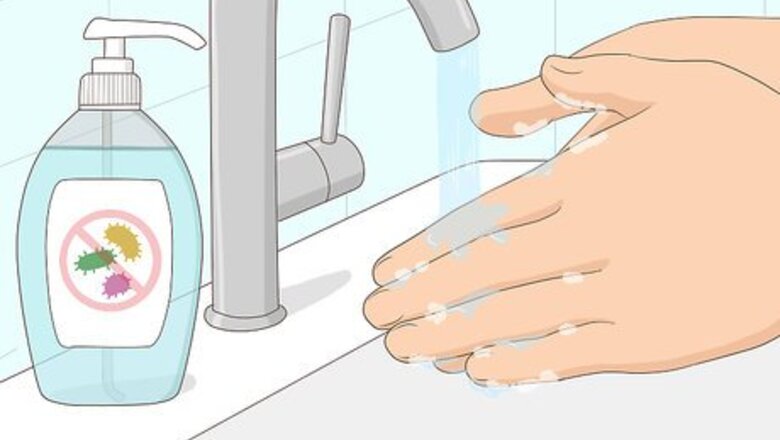
views
Post-Piercing Maintenance
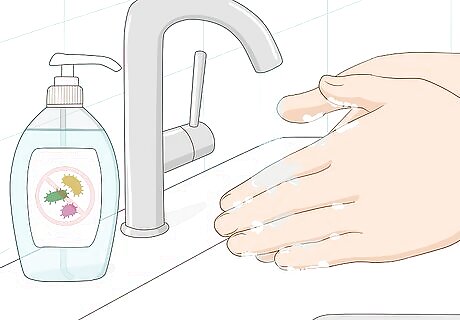
Wash your hands. Always wash your hands with antibacterial soap before touching your nipple piercing (even after it’s completely healed). The easiest way to cause an infection in your nipple piercing is to touch it without washing your hands first. Thoroughly wash your hands with antibacterial soap and water in the sink before cleaning or touching your piercing for any reason. Avoid touching your nipple piercing except to clean it for the first few weeks.
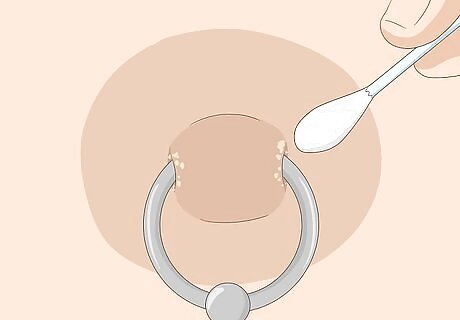
Remove any crust that forms. If your nipple piercing becomes crusty around the edges of the open wound, you need to carefully remove the scabby crust. It’s best to do this in the shower so the crust gets wet and is easier to remove. Use your finger or a Q-tip to gently dab away any crust that has formed around the nipple piercing. Be careful not to twist the ring too much while removing the crust. Only move the ring enough to get the scab off; don’t rotate it all the way through the piercing. Be very gentle during this procedure, as removing the crust too forcefully could cause a tear in the skin around the piercing and require a new healing process, or even result in infection. You could be depositing bacteria into the piercing if you don't wash your hands first.

Make a sea salt mixture. Pour ¼ teaspoon of non-iodized sea salt into one cup of warm distilled water. Let the sea salt dissolve in the cup. Use a paper towel to soak up the sea salt water and place it on top of your nipple. Let your nipple absorb the liquid for 5-10 minutes each day. You can also try inverting the cup with the sea salt mixture on top of your nipple so that it creates a kind of vacuum seal and lie back while your nipple soaks. But be careful not to spill the water. Do this every day for the first two weeks after piercing. After the first two weeks, you can switch to regular cleaning in the shower. But use return to this method if you develop an infection or any irritation. Make sure to use distilled water, as tap water contains impurities that can promote infection. You can also use packaged sterile saline (this is different than saline solution for contact lenses) to soak your nipple piercing and clean it. Usually the packaging for this kind of saline indicates that it is intended for wound care. Do not use rubbing alcohol, hydrogen peroxide, or antibiotic ointments.

Avoid contact with the piercing. For the first few days (maybe even for a couple of weeks) after you get your nipple pierced, it will be tender and swollen. In order to help the healing process along, you should avoid bumping it on anything or rubbing it on things. Try to wear loose fitting clothing and avoid tight, scratchy bras. Don’t wear constrictive clothing. If you need a little extra padding, consider using nipple pads intended for nursing mothers. This can help protect your piercing while it is healing.
Keeping Your Piercing Clean
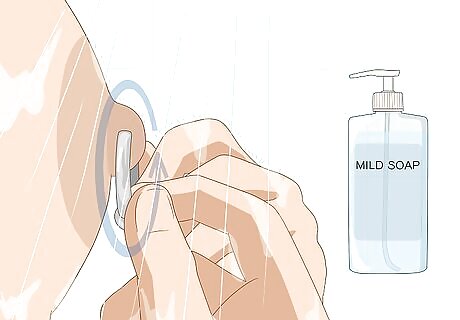
Use a mild soap in the shower. Each time you shower, you should use a gentle liquid soap to clean your nipple piercing. Pour some soap on your fingers and gently work it through the piercing by slowly rotating the ring (or sliding the barbell). Be sure to rinse it out completely while in the shower, as leftover soap residue can cause irritation. Avoid soaps that have fragrance, dye, or other added ingredients that could irritate your nipple piercing. Again, do not use alcohol, hydrogen peroxide, or antibiotic ointments.
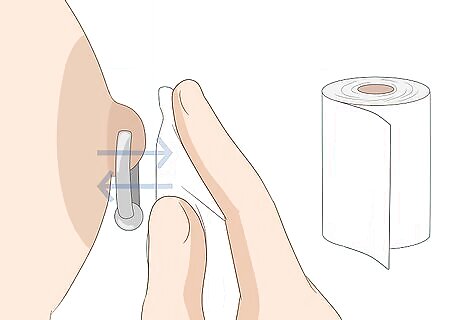
Pat your piercing dry. Use a paper towel to pat your nipple piercing after you finish showering. Leaving your nipple piercing wet and moist can create a breeding ground for bacteria, especially if you confine your piercing in tight clothes after you shower. Make sure your piercing is completely dry before you put clothes on. Be sure to use a disposable paper towel to pat your nipple piercing dry each time. Towels can be a host for bacteria, so using your towel to dry the piercing could cause an unwanted infection.
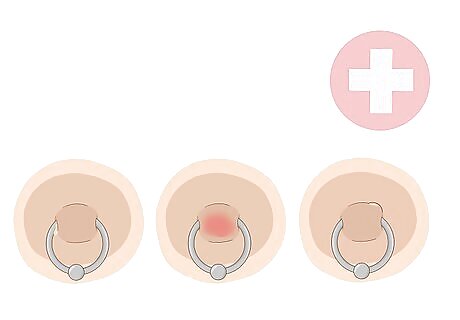
Consult a doctor if you suspect infection. If you see any signs of infection, it’s important for you to seek medical attention from a doctor as soon as possible. An infected nipple could cause a lot of problems for you and your body. Some symptoms to watch for include: Green or yellow pus coming out of the piercing Swelling that won’t go away after several weeks (or returns later) Excessive redness or pain A large lump in the breast or around the nipple
Choosing the Right Jewelry
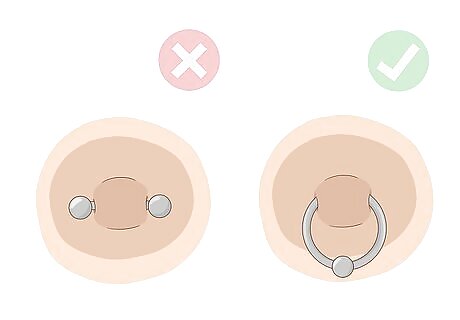
Use a ring. When you first get your piercing done, ask the piercer to use a ring instead of a barbell. Swelling will occur around the nipple piercing, which can make the barbell feel tight in the beginning. A ring is also easier to clean since you can rotate it through the piercing. After a couple months, you can switch to a barbell if you would like. Just wait until the piercing is completely done healing.

Choose surgical steel. It’s very important to use sterile, surgical steel piercing jewelry when you first get the nipple piercing. This will help stave off infection and promote a quicker healing process. Your nipple is a very sensitive area and needs to be cared for properly. Jewelry made out of other materials may irritate your new piercing and may even lead to infection.
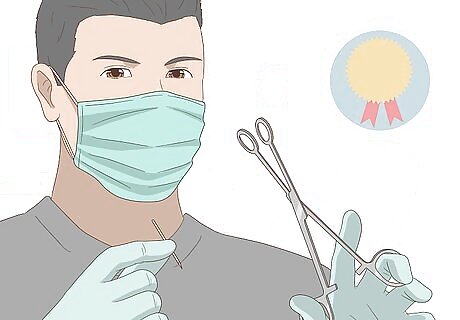
Ask the advice of a professional piercer. Make sure that the person doing your nipple piercing is a professional, licensed piercer. This usually means that they have apprenticed under a master piercer and been given a certification of training completed. They will usually operate out of a tattoo or piercing shop. Ask your piercer for advice on what kind of jewelry to choose for your nipple piercing and be sure to follow all of their aftercare instructions.

















Comments
0 comment